1 - 25 of 12
| Creator | Title | Description | Subject | Date | ||
|---|---|---|---|---|---|---|
| 1 |  | Gerig, Guido | Correspondence evaluation in local shape analysis and structural subdivision | Regional volumetric and local shape analysis has become of increasing interest to the neuroimaging community due to the potential to locate morphological changes. In this paper we compare three common correspondence methods applied to two studies of hippocampal shape in schizophrenia: correspondence... | 2007-01-01 | |
| 2 |  | Gerig, Guido | Diffusion tensor imaging: application to the study of the developing brain | Objective: To provide an overview of diffusion tensor imaging (DTI) and its application to the study of white matter in the developing brain, in both healthy and clinical samples. Method: The development of DTI and its application to brain imaging of white matter tracts is discussed. 48 studies usi... | 2007-01-01 | |
| 3 | 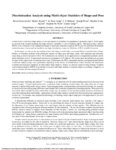 | Gerig, Guido | Discrimination analysis using Multi-object statistics of shape and pose | A main focus of statistical shape analysis is the description of variability of a population of geometric objects. In this paper, we present work towards modeling the shape and pose variability of sets of multiple objects. Principal geodesic analysis (PGA) is the extension of the standard technique ... | 2007-01-01 | |
| 4 |  | Gerig, Guido | Early postnatal development of corpus callosum and corticospinal white matter assessed with quantitative tractography | BACKGROUND AND PURPOSE: The early postnatal period is perhaps the most dynamic phase of white matter development. We hypothesized that the early postnatal development of the corpus callosum and corticospinal tracts could be studied in unsedated healthy neonates by using novel approaches to diffusion... | 2007-01-01 | |
| 5 |  | Gerig, Guido | Noise-induced bias in low-direction diffusion tensor MRI: replication of Monte-Carlo simulation with in-vivo scans | Clinical neuroimaging studies involving diffusion tensor MRI (DTI) require precise estimation of diffusion properties for statistical analysis. Tensor derived measures such as fractional anisotropy (FA) and trace are often analyzed for hypothesis testing. Given the limited scanning time typically av... | 2007-01-01 | |
| 6 |  | Gerig, Guido | Population-based fitting of medial shape models with correspondence optimization | A crucial problem in statistical shape analysis is establishing the correspondence of shape features across a population. While many solutions are easy to express using boundary representations, this has been a considerable challenge for medial representations. This paper uses a new 3-D medial model... | 2007-01-01 | |
| 7 | 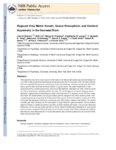 | Gerig, Guido | Regional gray matter growth, sexual dimorphism, and cerebral asymmetry in the Neonatal Brain | Although there has been recent interest in the study of childhood and adolescent brain development, very little is known about normal brain development in the first few months of life. In older children, there are regional differences in cortical gray matter development, whereas cortical gray and wh... | 2007-01-01 | |
| 8 | 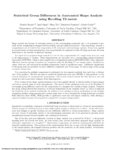 | Gerig, Guido | Statistical group differences in anatomical shape analysis using Hotelling T2 Metric | Shape analysis has become of increasing interest to the neuroimaging community due to its potential to precisely locate morphological changes between healthy and pathological structures. This manuscript presents a comprehensive set of tools for the computation of 3D structural statistical shape anal... | 2007-01-01 | |
| 9 | 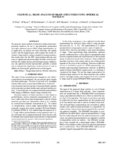 | Gerig, Guido | Statistical shape analysis of brain structures using spherical wavelets | We present a novel method of statistical surface-based morphometry based on the use of non-parametric permutation tests and a spherical wavelet (SWC) shape representation. As an application, we analyze two brain structures, the caudate nucleus and the hippocampus, and compare the results obtained to... | 2007-01-01 | |
| 10 |  | Gerig, Guido | Statistical shape analysis of Multi-Object complexes | An important goal of statistical shape analysis is the discrimination between populations of objects, exploring group differences in morphology not explained by standard volumetric analysis. Certain applications additionally require analysis of objects in their embedding context by joint statistical... | 2007-01-01 | |
| 11 | 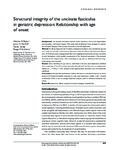 | Gerig, Guido | Structural integrity of the uncinate fasciculus in geriatric depression: relationship with age of onset | Background: The uncinate fasciculus connects limbic structures, such as the hippocampus and amygdala, with frontal regions. This study utilized diffusion tensor imaging to examine the structural integrity of the uncinate fasciculus in late-life depression. Method: 18 elderly depressed and 19 elderly... | 2007-01-01 | |
| 12 | 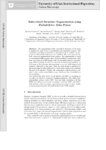 | Gerig, Guido | Subcortical structure segmentation using probabilistic atlas priors | The segmentation of the subcortical structures of the brain is required for many forms of quantitative neuroanatomic analysis. The volumetric and shape parameters of structures such as caudate are employed to characterize a disease or its evolution. This paper presents our fully automatic segmentati... | 2007-01-01 |
1 - 25 of 12
